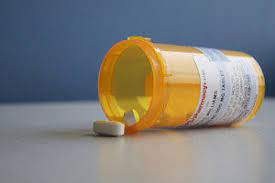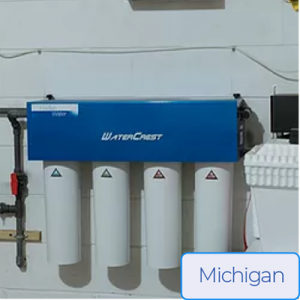To begin with, it is worth noting that pharmaceuticals often find their way into water sources through several means. It could be from medications flushed down toilets and sinks or from bodily excretions of humans and animals. Once in water sources, pharmaceuticals can pose significant risks to human health and the environment. For example, small amounts of pharmaceuticals in drinking water can cause long-term health effects such as reproductive and developmental issues, cancer, and other chronic diseases. Drugs in water can also affect fish, amphibians, and other aquatic organisms’ reproductive abilities and behavior.

Unfortunately, most municipal water treatment facilities in the United States do not have enough resources to filter pharmaceuticals and other emerging contaminants out of the water. They rely mostly on conventional disinfectant treatments such as chlorine, which is not efficient in removing pharmaceuticals and other complex chemicals. Additionally, the regulations set by the Environmental Protection Agency do not require water treatment plants to test or treat for pharmaceuticals, therefore putting the community’s safety at risk.
Water is a fundamental resource that sustains life, and it is crucial that we have access to clean and safe drinking water. In the United States, municipal water treatment facilities play a significant role in ensuring the delivery of potable water to our homes. In this blog post, we will explore the problem of pharmaceuticals in our water supply and highlight the potential benefits of advanced treatment technologies.
The Pharmaceuticals Dilemma
The presence of pharmaceuticals in our water supply is a serious and complex problem that has garnered increasing attention in recent years. When we consume medications, some of the compounds are excreted from our bodies and end up in wastewater. Although wastewater treatment plants are designed to remove harmful contaminants, they are not equipped to effectively remove pharmaceutical compounds. As a result, these pharmaceuticals often make their way into our rivers, lakes, and eventually back into our drinking water supply.
The Risks to Public Health and the Environment
Pharmaceuticals in our water supply pose potential risks to both public health and the environment. Studies have shown that long-term exposure to even trace amounts of pharmaceuticals in drinking water could have adverse effects on human health, including antibiotic resistance and endocrine disruption. Furthermore, aquatic life can also be affected by these compounds, leading to ecological imbalances and disruption of the food chain.

The Status Quo: Limited Municipal Treatment
Surprisingly, the majority of municipal water treatment facilities in the United States do not treat for pharmaceuticals. Instead, they rely on conventional treatment methods that are simply not designed to handle these complex chemical compounds effectively. While many of these facilities ask communities not to dispose of pharmaceuticals down the toilet, this remains a passive approach to a significant problem that necessitates a more active solution. In addition, water softeners do not treat the water, they simply soften the water. Reverse Osmosis only works for the water where the tap is, and doesn’t handle the water that is absorbed through our skin. Only a whole house water treatment system can guarantee clean, safe water through every faucet in your home.
The Pioneering Solution: Hanish Water WaterCrest-4 and WaterGlen-4
In the face of this challenge, innovative water treatment solutions like the Hanish Water WaterCrest-4 and WaterGlen-4 offer hope. These cutting-edge water treatment technologies (the same technology that NASA uses) have been specifically engineered to target pharmaceuticals and a range of other contaminants that conventional treatment methods struggle to remove effectively.

Advanced Filtration: WaterCrest-4 and WaterGlen-4 employ advanced filtration processes that go beyond the conventional techniques used in most municipal facilities. These systems utilize sophisticated methods to efficiently capture pharmaceuticals and other trace contaminants.
Conclusion
The presence of pharmaceuticals in our water supply demands urgent attention. While most municipal water treatment facilities in the United States do not currently address this problem, innovative solutions like the Hanish Water WaterCrest-4 and WaterGlen-4 offer Healthy Water for Healthy Families. It is imperative that we work together to protect our water resources, prioritize advanced treatment technologies, and create a more sustainable and healthier environment for generations to come. Remember, a small change today can lead to a significant impact tomorrow.
Links for additional information:
https://www.forbes.com/sites/forbestechcouncil/2022/07/19/theres-active-drugs-in-our-drinking-water-whats-being-done/?sh=60e7adb4753a
https://www.poison.org/articles/you-can-help-protect-the-water-supply
